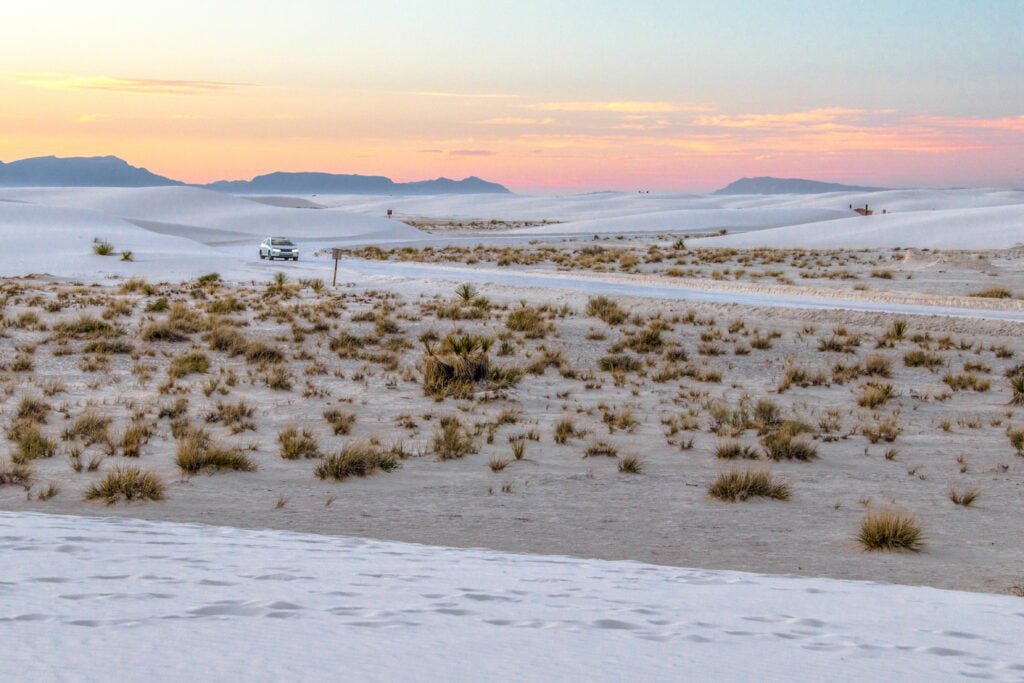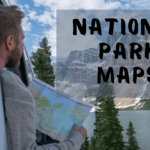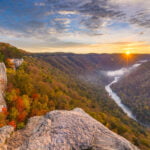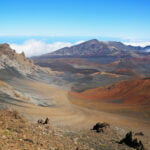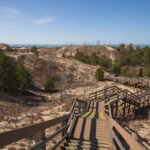White Sands National Park
Welcome to White Sands National Park, located in the Tularosa Basin of southern New Mexico. This park is home to the world’s largest gypsum dune field, covering 275 square miles of dazzling white sand dunes that offer a breathtaking and almost alien landscape. The park is dedicated to conserving this unique area, along with its history, ecology, and the geological forces that created it.
At White Sands National Park, visitors can engage in a wide range of activities. The stunning landscapes provide the perfect backdrop for hiking, picnicking, birdwatching, and the unique thrill of sand sledding. This area isn’t just about its visual beauty; it’s also a habitat for diverse plants and animals uniquely adapted to this harsh desert environment, showcasing nature’s incredible resilience.
The park is rich in cultural history as well, with ties to indigenous peoples, early ranchers, and military history, adding layers of depth to its natural beauty. Exploring ancient dwellings, visiting the interpretive center, or joining a ranger-led program can enrich your understanding of the area’s complex past.
White Sands National Park is a standout among America’s national parks, offering a unique mix of awe-inspiring scenery, fascinating wildlife, and deep historical roots. It’s a must-visit for anyone looking for an unforgettable adventure. So get ready to step into this otherworldly destination and discover the wonders of White Sands National Park.
Location of White Sands National Park
White Sands National Park is a mesmerizing expanse of pristine white gypsum sand dunes, nestled in the Tularosa Basin in south-central New Mexico, USA. The park spans over 145,000 acres, making it one of the most unique and captivating natural landscapes in North America. It is located near the city of Alamogordo and lies approximately 245 miles south of Albuquerque and 220 miles north of El Paso, Texas.
Directions to White Sands National Park
White Sands National Park is located in southern New Mexico. To get there:
- From Alamogordo, NM: Take US-70 East for about 15 miles directly to the park entrance.
For GPS navigation, use: White Sands National Park, Alamogordo, NM 88310.
Coordinates of White Sands National Park
- Latitude: 32.7872° N
- Longitude: 106.3257° W
Scenery White Sands National Park
The park’s geographical setting is characterized by its striking white gypsum sand dunes, which are highly uncommon as gypsum is typically dissolved by water and carried to the sea. However, the Tularosa Basin’s enclosed nature prevents this, allowing the formation of these breathtaking dune fields. White Sands National Park is surrounded by the Sacramento and San Andres mountain ranges, which contribute to the basin’s isolated and arid environment.
The unique location and geological features of White Sands National Park have created a distinct ecosystem that supports various species of flora and fauna. The park is home to several endemic species, including the elusive White Sands pupfish and the Apache pocket mouse. The park’s location also played a significant role in New Mexico’s history, as it was used for the testing of the first atomic bomb during World War II.
Recreational opportunities abound in White Sands National Park, which caters to a wide range of interests. Visitors can explore the stunning dune fields by hiking, horseback riding, sledding on the sand dunes, or even stargazing at night. Bird watching and photography are also popular activities, with the park’s surreal landscape providing the perfect backdrop. With its remarkable location and awe-inspiring scenery, White Sands National Park offers a truly unforgettable experience for nature lovers, outdoor enthusiasts, and history buffs alike.
White Sands National Park Opening Times
White Sands National Park is a breathtaking destination that offers a unique landscape and a serene atmosphere for visitors to enjoy. The park is open year-round, with some variations in opening hours depending on the season.
During the summer months, from Memorial Day to Labor Day, the park operates from 7 am to 9 pm. For the rest of the year, the park is open from 7 am to 7 pm. Keep in mind that the park’s operating hours may change due to weather conditions or special events, so it’s advisable to check the park’s website or contact the visitor center for the latest information before your visit.
It’s worth noting that certain areas within the park may have specific hours, such as the visitor center which typically closes earlier than the park itself. Additionally, the park may close entirely or partially due to missile testing on the adjacent White Sands Missile Range. These closures are generally announced in advance, so it’s essential to stay informed about any potential changes affecting your visit.
The park’s hours and closures are set primarily to ensure the safety of visitors and wildlife, as well as to accommodate maintenance and preservation efforts. For instance, the early evening closure helps protect the delicate ecosystem and nocturnal animals that call White Sands home.
When planning your trip to White Sands National Park, take into consideration the seasonal variations in opening hours, weather conditions, and possible closures. This will help you make the most of your visit to this stunning natural wonder, providing an unforgettable experience amid the enchanting gypsum dunes.
Visitor Centers and Facilities at White Sands National Park
White Sands National Park is home to a single visitor center, conveniently located near the park’s main entrance, which serves as a hub for park information, amenities, and services. The visitor center is named the White Sands Visitor Center (previously known as the Dunes Life Nature Trail), providing a comprehensive introduction to the park’s unique ecosystem, geology, and wildlife.
As you enter the visitor center, you will be greeted by a friendly park ranger who can assist you with any questions and provide useful insights to help you plan your visit. The center also offers a range of informative exhibits, including interpretive displays, interactive elements, and educational films that delve into the park’s history, cultural significance, and natural wonders. Additionally, the visitor center houses a gift shop, where you can purchase souvenirs, books, and other memorabilia to remember your trip.
For your convenience, restrooms and drinking fountains are available at the visitor center. However, there are no food and beverage services within the park, so it is advised to bring your own snacks and water for your visit. The park offers several picnic areas, including the Playa Picnic Area and the Dune Life Nature Trail Picnic Area, where you can relax and enjoy a meal amidst the breathtaking scenery. Although there are no playgrounds within the park, the vast expanse of pristine white sand dunes provides an excellent natural playground for children and adults alike.
To make the most of your visit, it is highly recommended to stop by the visitor center first thing upon arrival. Here, you can obtain a park map, learn about ranger-led programs, and gather up-to-date information on trail conditions and any park alerts. Keep in mind that the park’s desert environment can be harsh, so always come prepared with sun protection, adequate water, and appropriate clothing. By taking advantage of the visitor center’s resources and following park guidelines, you’ll be well on your way to a memorable and enjoyable experience at White Sands National Park.
Accessibility at White Sands National Park
White Sands National Park is committed to providing an enjoyable experience to all visitors, including those with disabilities or mobility challenges. The park offers a range of accessible facilities and experiences, ensuring everyone can appreciate the unique beauty of the area.
Visitors with mobility needs can access the park’s Visitor Center, which features accessible exhibits, restrooms, and parking. Additionally, the Dune Life Nature Trail features a 0.4-mile wheelchair-accessible boardwalk, allowing guests to immerse themselves in the stunning white gypsum dunes.
For a more in-depth experience, the park has made specific efforts to enhance accessibility on the Interdune Boardwalk, a 0.6-mile round-trip trail that offers breathtaking views of the dunes and the surrounding landscape. The trail has ample seating and interpretive exhibits, making it an ideal outing for those seeking an accessible outdoor adventure.
The park’s picnic areas also offer accessible tables and restrooms, ensuring a comfortable and enjoyable experience for all. While most of the park’s dunes are not easily navigable for visitors with mobility challenges, the Playa Trail is relatively flat, providing an opportunity to explore the park’s unique environment further.
It is essential to be aware of some areas that may present challenges for visitors with accessibility needs. Sand can be tricky to navigate, and certain areas may not be well-suited for wheelchairs or other mobility aids. It is recommended that visitors requiring additional assistance plan their visit accordingly and contact the park staff for further guidance on exploring the park’s many wonders.
Getting To White Sands National Park
White Sands National Park, located in New Mexico, is a mesmerizing destination known for its vast gypsum sand dunes. Getting to the park is relatively easy as there are several transportation options available for visitors.
The closest airport to White Sands is the El Paso International Airport (ELP), situated approximately 85 miles south of the park. From the airport, you can rent a car or use a shuttle service to reach the park. Alamogordo, a nearby city located 15 miles east of the park, offers bus services connecting it to major cities like Albuquerque and El Paso.
If you prefer driving, the most common route to the park is via US Highway 70. From Alamogordo, head west on the highway for about 15 miles until you reach the well-marked park entrance. Las Cruces, a larger city, is around 52 miles west of the park and offers additional lodging, dining, and transportation options.
When it comes to parking, White Sands National Park has two main parking areas: the visitor center and the Dunes Drive parking lots. The parking fee is included in the park’s entrance fee, which is $25 per vehicle or $15 per person for those entering by foot, bicycle, or motorcycle. Peak times at the park are usually during holidays and weekends, especially in the spring and fall months. During these times, parking may be limited, so arriving early in the morning or later in the afternoon is recommended to secure a spot and enjoy a delightful experience in this natural wonderland.
White Sands National Park Entrance Fees and Passes
White Sands National Park welcomes visitors to explore its breathtaking landscape with a required entrance fee. The fees are as follows: $25 per vehicle, $15 per person for those arriving by foot or bicycle, and $20 per motorcycle. These fees grant you access to the park for seven consecutive days. If you’re a frequent visitor or plan on exploring multiple national parks within a year, you might consider purchasing the America the Beautiful Annual Pass for $80. This pass offers unlimited access to over 2,000 federal recreation sites, including national parks, wildlife refuges, and national forests.
To obtain your entrance pass, you can either purchase it at the park’s entrance station or online through the official National Park Service website. Keep in mind that popular times and holidays may result in longer wait times at the entrance station.
There are exemptions and discounts available for certain groups. For instance, active-duty military members and their dependents are eligible for a free annual pass, while senior citizens (aged 62 and above) can purchase a lifetime pass for $80 or an annual pass for $20. Additionally, individuals with disabilities and fourth-grade students can obtain a free Access Pass and Every Kid Outdoors Pass, respectively.
The entrance fees and permits contribute to the park’s maintenance, visitor services, and preservation efforts, ensuring its natural beauty and resources remain protected for future generations to enjoy. However, it’s important to note that the park pass only covers entrance fees and may not include additional fees for activities, camping, or special tours.
White Sands National Park Park Rules and Regulations
At White Sands National Park, adherence to park rules and regulations is essential for the preservation of its unique ecosystem and the safety of both visitors and wildlife. Responsible behavior allows future generations to enjoy this captivating landscape and ensures that the wildlife continues to thrive.
One common violation is the removal of natural and cultural features, such as plants, rocks, and historic artifacts. It is important to leave these items undisturbed to maintain the park’s integrity. Another prohibited activity is feeding the wildlife, as it can lead to their dependence on humans and the disruption of natural feeding patterns. Driving off designated roads is strictly forbidden to protect the delicate gypsum dunes from erosion. Camping is only allowed in designated areas, ensuring minimal impact on the environment and wildlife habitats.
When visiting White Sands National Park, stay on marked trails, respect closures, and obey posted speed limits. Plan your visit in advance, educate yourself about the park’s unique features and potential hazards such as extreme weather conditions, and always carry adequate water, sun protection, and navigational tools. By following these guidelines, you are doing your part to preserve the beauty and wonder of White Sands National Park for generations to come.
Transportation Within White Sands National Park
Transportation in White Sands National Park offers a variety of options to cater to the needs of different visitors. The most popular choice is exploring the park via personal vehicles, allowing freedom to move at your own pace and access all the park’s main attractions, including the Dune Life Nature Trail and the Interdune Boardwalk. However, note that oversized vehicles, such as RVs and large trailers, may have difficulty finding suitable parking spaces.
For a more environmentally friendly option, consider cycling along the 8-mile Dunes Drive. This not only reduces your carbon footprint, but also allows for a more intimate connection with the stunning gypsum dunes. Keep in mind that the desert terrain can be challenging, so make sure your bike is well-equipped for off-road adventures. Cycling is only recommended for visitors in good physical condition.
Hiking is another excellent way to explore the park, providing a more up-close and personal experience. There are five established trails ranging from easy to moderately challenging, making them suitable for various fitness levels. Remember to bring plenty of water, sunscreen, and appropriate footwear. Hiking is not advised during extreme heat or storms.
For visitors with mobility limitations, the park offers accessible facilities and paved routes such as the Interdune Boardwalk, ensuring everyone can enjoy the beauty of White Sands. In addition, the park’s visitor center provides information on accessibility and services to accommodate special needs.
When choosing the best mode of transport, consider factors like your physical abilities, time constraints, and environmental impact. Whether it’s by car, bike, or foot, White Sands National Park offers ample opportunities to revel in its breathtaking landscapes.
White Sands National Park Attractions
1. White Sands Dunes Drive
Description: The Dunes Drive is an 8-mile scenic road that takes you deep into the heart of the park’s gypsum dune field, offering picturesque views and numerous stops for exploration.
Uniqueness: This drive offers an immersive experience to explore and appreciate the pristine beauty of the vast white dunes.
Best Time to Visit: Early morning or late afternoon for cooler temperatures, dramatic lighting, and less crowded conditions.
Considerations: The road is paved and easily accessible by most vehicles. Always check for road closures due to weather or missile testing at the nearby military base.
2. Alkali Flat Trail
Description: The Alkali Flat Trail is a 5-mile round-trip hike that leads you through stunning dunes, desert flora, and the dried-up remnants of Lake Otero.
Uniqueness: The trail provides a great adventure away from the main dune field, offering a more remote and undisturbed setting to enjoy the unique landscape.
Best Time to Visit: Fall and spring, when temperatures are cooler and more comfortable for hiking.
Considerations: The trail is moderately difficult and requires good physical fitness. Carry plenty of water, sunscreen, and a hat to protect from the sun.
3. Interdune Boardwalk
Description: The Interdune Boardwalk is an easy, 0.4-mile wheelchair-accessible trail offering great views of the dunes and an educational experience through interpretive signs.
Uniqueness: This short and easy trail provides an opportunity for all visitors, including those with mobility challenges, to admire the stunning dunes.
Best Time to Visit: Year-round, for a leisurely stroll and a chance to learn about the unique geology and ecology of White Sands.
Considerations: The boardwalk is suitable for families with young children or visitors with limited mobility.
4. Sunset Stroll
Description: The Sunset Stroll is a ranger-guided, 1-mile walk that takes place every evening, offering beautiful views of the dunes and sky as the sun sets.
Uniqueness: This popular activity provides a chance to explore the park with a knowledgeable guide while experiencing the dramatic and colorful desert sunset.
Best Time to Visit: Year-round, just before sunset.
Considerations: Bring a camera and dress in layers, as temperatures can drop quickly once the sun sets.
5. Sledding and Picnicking
Description: Enjoy a thrilling ride down the dunes on a sled, and then savor a lovely picnic at one of the shaded tables situated near the park’s entrance.
Uniqueness: Sledding on the snow-white dunes is a memorable and exhilarating experience, providing a fun activity for all ages.
Best Time to Visit: Cooler months (October through April) for a more comfortable experience.
Considerations: Sleds can be purchased or rented at the visitor center. Always practice Leave No Trace principles and pack out any trash.
Personal Anecdote: My most memorable experience at White Sands National Park was sledding down the dunes with my family. The excitement of gliding across the soft, snow-like sand was extraordinary, and the laughter-filled moments are memories I’ll cherish forever.
Recreational Activities at White Sands National Park
White Sands National Park is an oasis of pristine white gypsum sand dunes nestled in the heart of New Mexico. The park offers an array of recreational activities that cater to a wide range of interests and fitness levels. From hiking and cycling to ranger programs and guided tours, visitors are bound to find something memorable to fill their days.
Trails and Hiking: The park boasts five established trails, each offering a unique perspective of the gypsum dunes. The most popular trail is the 5-mile Alkali Flat Loop, a moderately challenging hike that rewards visitors with panoramic views of the dunes. For families or those seeking a more leisurely stroll, the Interdune Boardwalk and Playa Trail are accessible options. Ensure you have adequate water, sun protection, and footwear to handle the sandy terrain. During summer months, consider starting early in the morning or later in the afternoon to avoid the heat.
Climbing: While there are no traditional rock climbing opportunities in the park, visitors can try their hand at “dune sledding” by sliding or rolling down the dunes. Sleds can be purchased or rented from the visitor center, and remember to wax the bottom for a smoother ride.
Cycling: For a unique cycling experience, the 8-mile Dunes Drive offers a paved road through the heart of the dunes. Road cyclists and families can enjoy the scenic ride and occasional wildlife sightings. Note that off-road cycling is not permitted to protect the fragile ecosystem.
Ranger Programs: The park offers a variety of ranger-led programs, including daily talks, sunset strolls, and full moon night events. These programs provide visitors with opportunities to learn about the park’s history, ecology, and wildlife while enjoying the natural beauty of the dunes.
Guided Tours: For a more in-depth experience, visitors can book a guided tour with a local outfitter. Tours can be tailored to specific interests, such as photography, geology, or plant life, and often include hikes or 4WD vehicle excursions.
Other Activities: Visitors can also enjoy picnicking, wildlife watching, and stargazing within the park. The lack of light pollution makes White Sands an excellent spot for stargazing, with several designated areas available for setting up telescopes or simply lying back and admiring the night sky.
Seasonal Variations and Restrictions: Most activities are available year-round, but visitors should be aware of seasonal variations in temperature and weather conditions. Summer months can be extremely hot, while winter can bring cooler temperatures and even occasional snowfall on the dunes. Some trails may be closed or restricted due to weather or resource protection.
In conclusion, White Sands National Park offers a myriad of recreational activities for visitors to immerse themselves in the park’s unique landscape. With options for all ages and fitness levels, a trip to White Sands is sure to be an unforgettable experience.
Best Times to Visit White Sands National Park
White Sands National Park, a mesmerizing landscape of unique white gypsum sand dunes, offers visitors a strikingly beautiful experience year-round. However, the best time to visit depends on your preferences and priorities.
Spring (March to May) is an ideal time for those who prefer milder temperatures, with daytime highs ranging from 70°F to 85°F, and cooler evenings. Springtime also boasts beautiful wildflower blooms, enhancing the park’s already stunning scenery. However, be aware that during March and April, the park experiences occasional high winds and reduced visibility.
Summer (June to August) brings sweltering temperatures, often exceeding 100°F. If you’re accustomed to the heat and plan to visit during this season, it’s essential to stay hydrated and avoid midday sun exposure. Despite the hotter weather, summer is the busiest season, so expect more crowds during this period. On the bright side, the park offers ranger-led programs and special events such as full moon hikes during the summer months.
Fall (September to November) is another excellent time to visit, with temperatures ranging from 60°F to 80°F during the day. Wildlife enthusiasts should keep an eye out for migratory birds flying south for the winter. The fall season sees fewer crowds, making it a perfect time to explore the park at a more leisurely pace.
Winter (December to February) has cold daytime temperatures, often around 60°F, and freezing nights. However, the park is breathtaking when blanketed in snow, a sight few visitors experience. Winter also has the fewest visitors, so you’ll enjoy a more peaceful and tranquil visit.
In summary, if you prefer milder temperatures and fewer crowds, spring and fall are the optimal times to visit White Sands National Park. Summer offers exciting events and programs but can be hot and crowded, while winter provides a serene and unique experience for the more adventurous visitor.
Nearby Attractions to White Sands National Park
White Sands National Park, located in southern New Mexico, is famous for its stunning gypsum sand dunes, which are an unusual and captivating sight. However, this enchanting region also offers several other attractions that can enhance your visit to the park.
Firstly, just 15 miles west of the park lies the New Mexico Museum of Space History. This interactive museum aims to inspire and educate visitors about the history and science of space exploration. Exhibits cover topics such as early rocket engineering, satellite technology, and astronaut training. Admission fees are $8 for adults and $6 for children, and the museum is open daily from 10 am to 5 pm.
Secondly, about 45 miles southwest of White Sands National Park is the Oliver Lee Memorial State Park. This park features hiking trails, picturesque views, and the historic Oliver Lee Ranch House, which provides a glimpse into 19th-century life in the region. There are also campgrounds available for visitors who wish to extend their stay. Day-use fees are $5 per vehicle, and the park is open daily from 6 am to 9 pm.
Lastly, approximately 85 miles southeast of the park, you’ll find the Carlsbad Caverns National Park. One of the most famous cave systems in the world, it offers guided tours for visitors to explore the massive underground chambers filled with fascinating geological formations. Hours of operation vary and fees depend on the type of tour selected, so it’s recommended to check their website for detailed information.
While each attraction offers a unique and enriching experience, visitors should keep in mind that including them in a trip to White Sands National Park will require additional travel time and expenses. However, these nearby attractions provide an opportunity to delve deeper into the region’s natural and cultural history and enjoy a well-rounded and memorable visit to southern New Mexico.
Tips for Visiting White Sands National Park
White Sands National Park, located in New Mexico, offers a unique and otherworldly experience with its vast expanse of glistening white gypsum sand dunes. To make the most of your visit, consider the following tips:
1. Best time to visit: While the park is open year-round, the ideal time to visit is between October and April when temperatures are cooler and more comfortable. If you’re visiting during the summer months, aim for early mornings or late afternoons to avoid the heat.
2. What to pack: Ensure you have sun protection, including a wide-brimmed hat, sunglasses, and sunscreen. Sturdy footwear is essential for traversing the dunes, as well as lightweight, breathable clothing. Bring plenty of water, as there are no facilities beyond the visitor center, and pack a snack or lunch. If you’re planning to sled down the dunes, bring a plastic sled or purchase one at the visitor center.
3. Photography tips: To capture the stunning contrasts between the white sands and the deep blue sky, visit during the early morning or late afternoon when the sunlight is softer and casts long shadows. Additionally, using a polarizing filter can help to enhance colors and reduce glare.
4. Safety precautions: Be mindful of your surroundings and stay on designated trails to avoid getting lost. Keep an eye out for wildlife such as sidewinder rattlesnakes, which blend in well with the sand. Always carry a map, compass, and extra water.
5. Potential hazards: The primary hazards at White Sands are heat, sun exposure, and dehydration. Make sure to stay hydrated and take frequent breaks in shaded areas.
6. Recommended itineraries: For a short visit, explore the Dune Life Nature Trail, a 1-mile loop that offers a glimpse into the park’s diverse ecosystem. If you have more time, consider hiking the Alkali Flat Trail, a 5-mile loop providing stunning views of the dunes and surrounding mountains. For an unforgettable experience, partake in a ranger-led sunset stroll or camp overnight at one of the park’s backcountry sites.
By considering these tips, visitors of all levels of experience and interests can enjoy a captivating and memorable trip to White Sands National Park.
Camping and Lodging at White Sands National Park
White Sands National Park, located in the mesmerizing landscape of New Mexico, is a popular destination for tourists. When it comes to accommodation and lodging options in and around the park, visitors have a variety of choices to suit their preferences and budgets.
For visitors seeking an authentic outdoorsy experience, camping is a fantastic option. The park offers ten backcountry camping sites that can be reserved on a first-come, first-served basis. These sites are primitive, with no water or restrooms, offering a true connection with nature. Camping in the park usually costs around $3 per person, with children under 15 being free of charge. It is essential to pack all necessary supplies and arrive prepared for a self-sufficient camping experience.
If you prefer the comfort of a hotel, the nearby town of Alamogordo, about 15 miles from the park, offers various options. Budget travelers can find affordable motels such as Motel 6 or Super 8, providing basic amenities at reasonable prices ranging from $50 to $100 per night. Those seeking a mid-range option will find Holiday Inn Express or Hampton Inn to be suitable choices, offering comfortable rooms, complimentary breakfast, and other amenities for approximately $100 to $200 per night. For a more luxurious stay, consider Fairfield Inn & Suites, where prices range from $150 to $250 per night, offering upscale rooms and exceptional service.
Booking your accommodation is typically done online through the hotel’s website or third-party travel websites. It’s advisable to book in advance, especially during the peak season, to secure the best rates and availability.
In summary, White Sands National Park caters to diverse accommodation preferences, from rugged backcountry camping to luxurious hotel stays. Consider factors such as location, comfort, and budget when selecting your lodging, and ensure to book in advance to secure the best options for your visit.
Food and Dining Options White Sands National Park
When visiting the stunning White Sands National Park, there are various food and dining options to cater to different preferences and budgets. Although the park itself does not have any restaurants or cafes, the visitor center offers a small selection of pre-packaged snacks and beverages for purchase. For those who prefer a more extensive meal, it’s ideal to bring your own picnic to enjoy amidst the surreal landscape. Several shaded picnic areas with tables and barbecue grills are available throughout the park, providing a comfortable setting for a memorable outdoor meal.
If you’re seeking a wider choice of cuisine, the neighboring town of Alamogordo, just a 20-minute drive from the park, offers numerous delightful eateries. The dining scene in Alamogordo ranges from cozy cafes and fast-food joints to family-run restaurants and international cuisine, with options to suit various dietary preferences, including vegetarian and gluten-free choices. Prices are generally affordable, making it easy for visitors to find the perfect meal without breaking the bank.
For those staying overnight in the area, self-catering accommodation options are available in Alamogordo, including vacation rentals and hotels with kitchen facilities. This allows visitors to prepare their own meals, catering to specific dietary requirements or simply enjoying the comfort of home-cooked food after a long day of exploring the mesmerizing dunes of White Sands National Park.
Visitor Numebers White Sands National Park
White Sands National Park, located in southern New Mexico, is renowned for its stunning gypsum sand dunes that stretch over 275 square miles. Over the years, the park has experienced an increasing trend in visitor numbers, with over 600,000 people visiting annually. The peak season typically runs from March through October, with the highest number of visitors converging during spring break, summer vacations, and holiday weekends. During these times, the park can become crowded, and facilities such as parking lots, picnic areas, and restrooms may be heavily used.
Several factors that affect visitation trends include weather conditions, local events, and school holidays. In recent years, park management has made efforts to adapt to the increase in visitor numbers by implementing strategies like timed entry and encouraging visitors to utilize less frequented areas of the park.
To fully enjoy the beauty of White Sands National Park while minimizing your impact on the environment and resources, consider visiting during the off-peak season, such as winter or early spring. Additionally, weekdays are typically less crowded than weekends, offering a more serene experience. Arriving early in the day or staying late into the evening can also help avoid peak visitation hours. Regardless of when you visit, remember to practice Leave No Trace principles to preserve the pristine landscape and support ongoing conservation efforts.
By being mindful of these trends and planning your visit accordingly, you will reap the rewards of a more intimate connection with the awe-inspiring natural beauty of White Sands National Park.
History and Background of White Sands National Park
White Sands National Park, nestled in the Tularosa Basin of New Mexico, is a true natural wonder with a fascinating history. Established as a national monument in 1933 by President Herbert Hoover and upgraded to a national park in 2019, White Sands is home to the world’s largest gypsum dunefield, with 275 square miles of glistening white sand dunes.
The Tularosa Basin has a rich human history, with evidence of human presence in the area dating back over 10,000 years. The indigenous people of the region, including the Mescalero Apache tribe, have long considered the area sacred and used the resources provided by the park for their survival. European settlers arrived in the basin in the 19th century, with ranchers, miners, and the railroad transforming the landscape.
In the 20th century, White Sands played an important role in the development of the US military. During World War II, the nearby Alamogordo Bombing Range was established, and in 1945, the world’s first atomic bomb was detonated at the Trinity Site, just north of the park. The White Sands Missile Range, established in 1947, remains active today, although its activities are strictly controlled to minimize impacts on the park and its visitors.
The park hosts a variety of ongoing preservation and restoration efforts, including the removal of invasive plant species and the protection of endangered and threatened wildlife, such as the White Sands pupfish and the Apache pocket mouse. The park also plays an essential role in educating the public about the unique geology, ecology, and cultural history of the Tularosa Basin.
Visitors to White Sands National Park have the opportunity to learn about the diverse history of the region through interpretive exhibits, ranger-led programs, and self-guided tours. The park’s captivating landscape and compelling history make it an invaluable resource for understanding the connectedness of human and natural histories and the importance of preserving these extraordinary environments for future generations.
Flora and Fauna at White Sands National Park
White Sands National Park, located in New Mexico, is a haven for a diverse range of plant and animal life, thriving in the park’s unique ecosystems and habitats. The park’s most distinct feature, the glistening white gypsum sand dunes, plays host to many endemic species, creating a fascinating environment for nature enthusiasts to explore.
One of the park’s most notable inhabitants is the elusive White Sands pupfish, an aquatic species found only in the area’s interdunal lakes and gypsum springs. These tiny fish have adapted to survive in the park’s extreme conditions, including high salinity and temperature fluctuations.
The park is also home to a variety of mammals, including the Apache pocket mouse, kit fox, and the endemic white dunes sagebrush lizard. These animals have evolved to blend in with their white surroundings, making them difficult to spot but a true delight when sighted.
The flora in White Sands National Park has also adapted to survive in the harsh environment. One of the most recognizable plants is the soaptree yucca, which can grow a long trunk to keep its leaves above the shifting sands. Other species, like the alkali sacaton and skunkbush sumac, also thrive in this unique ecosystem.
To responsibly and safely enjoy the park’s flora and fauna, visitors are encouraged to stay on designated trails, maintain a safe distance from wildlife and follow all posted guidelines. To increase your chances of spotting the park’s unique inhabitants, consider participating in a ranger-led program or carrying binoculars for a closer look. Lastly, remember to respect the park’s delicate ecosystems by leaving no trace, so future generations can continue to appreciate the beauty of White Sands National Park.

